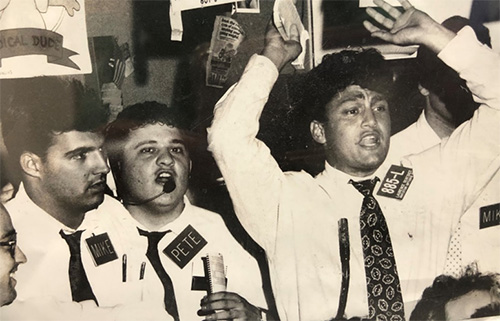Palm Beach Daily
Smart Traders Take Small Profits Every Single Day
Trading is a business. And like any business, you have to have a goal of what you want to make, and a plan to hit that goal.
When I was running my hedge fund, that was the only way I did business. I had clients write down a number on a piece of paper, and that’s what I made for them.
Similar to those clients, anyone who’s serious about trading should have a goal of what they want to make. A number on a piece of paper that they’re going to make in one month… two months… or whatever timeframe it may be.
And there’s one specific way to achieve that…
You should always look to put a P [profit] on the page. It doesn’t matter if the profit is small – if you have it, you take it.
This is the only reliable way to hit your trading goals.
Most traders want to make a specific amount of money… but they also want to get there in the fastest way possible. They tend to overleverage their positions, load up on risky bets, and get blown up.
That’s a fast way to become poor, not rich.
The smart trader… the one who’s in the vast minority… is taking small profits every single day.
And if you keep doing that, over and over again, you accumulate a larger base of capital and can afford higher levels of risk… which inevitably leads to bigger rewards.
Trading this way means your winners will outweigh your losers. You won’t be all-in on one high-risk idea – the harbinger of death in the trading world.
It seems obvious and easy to follow, but most new traders don’t think this way…
First, it’s because they get attached to their losers. They sit on a losing position, hoping it will eventually become profitable… and it usually doesn’t.
And second, they never take a profit unless it’s a grand slam. They’ll keep pressing on a winner, even when they’re losing money overall. They think that’s the only way to be successful.
But that’s the wrong line of thinking… and it’s the #1 pitfall new traders tend to fall into.
They don’t understand how to size their positions according to how they’re trading. They don’t earn their risk. And understanding how to do that is the most important thing in trading.
For example, in 1984, I started out on the floor of the Chicago Board Options Exchange, with $10,000 of my own money.

Larry (right) on the floor of the Chicago Board Options Exchange in the mid-1980s
I would allow myself a sum of money to trade and grow. And I kept losing all of it.
At the same time, I had a buddy named Andy who was making money every day. But I couldn’t figure out what he was doing differently.
I called my mom and told her Andy was making so much money and I was losing all of mine. She said, “Just do what he’s doing.”
Here’s what he was doing: Letting profits slowly trickle in.
He wasn’t going all-in on a risky trade idea. He was slowly, but surely, building a strong base of capital.
In other words, putting a “P” on the page, no matter what.
It took me a long time to grasp this concept. I chewed through all of my money probably two or three times by making silly mistakes. Things like being too impulsive, going for the home run, or holding onto losers too long… All the basic “no-no’s” of trading.
But each time I chewed through all of my own capital, I learned something new.
I got closer to learning how to let go of losers and avoid impulsive trades. Then, I got picked up by another firm and they gave me some money to trade and a shot. And over time, I began to figure out proper money management.
But it takes both practicing on your own and learning from others. I was lucky because I made all my mistakes early on in my career and was willing and able to bounce back.
The reason I’m telling you all this is to inspire you. Anyone can start small and become a big-time trader… especially if I could.
It all starts with learning how to slowly put profits on the page. Before long, you’ll notice those profits grow larger and larger. And that’s when you’ll know you’ve made it as a successful trader.
Regards,
Larry Benedict
Editor, The Opportunistic Trader
P.S. Being a successful trader can take years of hard work and experience… but even more importantly – every trader needs an edge.
My edge is a rare event that I call “the 7-Day Blitz.” During this time, the markets are prone to extreme volatility – which can lead to extreme profits. Of course, most traders don’t even know what it is or how to trade it.
Fortunately, all it takes is a single ticker to make life-changing gains. And on Wednesday, September 8 at 8 p.m. ET, I’ll be revealing all the details about this rare event – including the one ticker you need to trade it.
Just sign up right here so you don’t miss my free special presentation.

